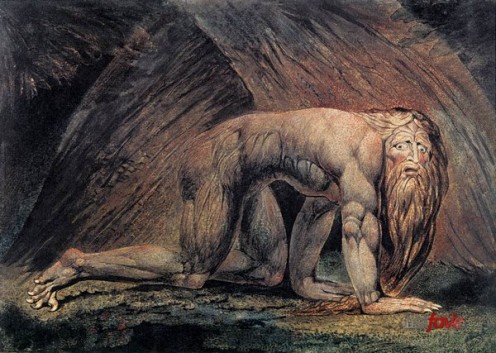Clinical Lycanthropy: An Introduction with Case Study

From Antiquity to Present: Selected Instances of Clinical Lycanthropy
Homer’s Odyssey depicts it as the consequence of Circe the sorceress’ ill will. The Book of Daniel considers it a bout of insanity, from which King Nebuchadnezzar suffered for seven years. Citizens of Ancient Greece claimed it yellowed the skin, hollowed the eyes, and prompted individuals to habitually prowl tombs throughout the region. Abyssinians called forth an exorcist, who subsequently questioned and removed what was thought as being an evil spirit. During the Middle Ages, Europeans deemed it as evidence of witchcraft, and thousands of those afflicted were eradicated via mass executions. In the 19th Century, Manuel Blanco Romasanta insisted on it as his defense against accusations of multiple counts of murder. Presently, the Diagnostic and Statistical Manaul of Mental Disorders, or DSM-IV, characterizes it as a cultural-bound syndrome, and has termed it as clinical lycanthropy.
The Medicalization of Lycanthropy
A form of psychosis, patients diagnosed as having clinical lycanthropy, perhaps better termed as therianthropy, often experience delusions of being an animal, most commonly a wolf or canine, but also a distinct variety of additional creatures, such as bees, horses, birds, frogs, cats, and others, and acting as such.
Symptoms of this mental disorder generally include a patient’s recollection of having felt like an animal, the expression of animalistic behavior, or simply an individual’s belief in a future, current, or past transformation.
While no mental or neurological illness has been recognized as serving as the root cause of this condition, literature on clinical lycanthropy suggests that patients may have previously suffered from schizophrenia, manic or severe depression, or the effects of substance abuse, particularly that of hallucinogens.
References for Clinical Lycanthropy
- Barking mad? A brief overview of clinical lycanthropy | drmarkgriffiths
Another WordPress.com site - Clinical lycanthropy
Therianthropes.com is your first source of information about therianthropes and clinical lycanthropy - http://www.medscape.com/features/slideshow/culture-syndrome
- http://www.medscape.com/features/slideshow/culture-synd
- The King's Pride and Perversion - Daniel 4:30-33
- View from Mount Diablo: An Annotated Edition - Ralph Thompson, John Lennard - Google Books
A Documented Case
The documented case of a 49-year-old woman diagnosed with clinical lycanthropy was originally published in The American Journal of Psychiatry, Vol. 134, No. 10. October 1977, and is available here, at primitivism.com. The text includes a detailed discussion of possible causes, as well as treatment.






